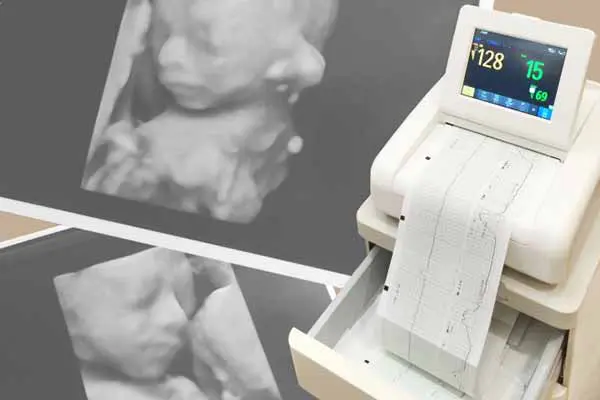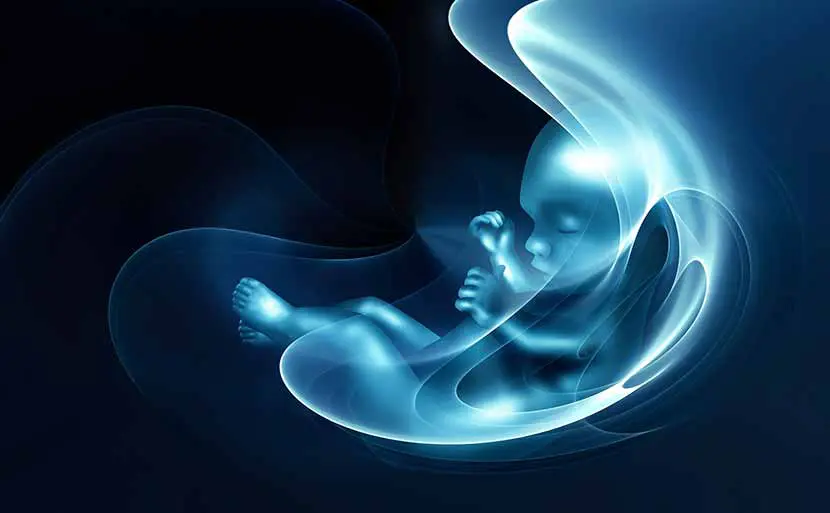- What is Neural Tube Defect?
- Causes of Neural Tube Defect
- Types and Symptoms of Neural Tube Defect
- When is Neural Tube Defect Detected?
- Diagnosis of Neural Tube Defect
- Treatment of Neural Tube Defect
- Relationship between Neural Tube Defect and Folic Acid
- Conclusion
- Frequently Asked Questions about Neural Tube Defects
What is Neural Tube Defect?
The neural tube is the part in the mother’s womb that forms the basis of the baby’s brain and spinal cord, and it is formed around the 6th week of pregnancy. It starts as a flat structure in the fertilized egg, and as it closes at both ends, it forms a tube called the neural tube. As the fetus grows, the cranial end develops into the brain, the caudal end into the spinal cord, and the surrounding tissue develops into the meninges.
Neural tube defects (NTDs) occur when the development of the neural tube is impaired, resulting in the tube not closing properly. In Japan, it is estimated to occur at a frequency of approximately 6 out of every 10,000 births.
Causes of Neural Tube Defect
There are several causes of neural tube defects, but a major factor is the deficiency of folic acid, a type of B vitamin, during pregnancy.
Other factors include certain medications (such as valproic acid, an anti-seizure medication), diabetes, obesity, environmental factors such as high fever during early pregnancy, and genetic factors.
Types and Symptoms of Neural Tube Defect
The main types of neural tube defects include spina bifida, anencephaly, and encephalocele.
Spina Bifida
The spinal cord, a bundle of thick nerves that transmit commands from the brain to various parts of the body, normally passes through the spine (vertebrae).
However, in spina bifida, the neural tube on the lower side fails to close, resulting in a condition where the bones of the spine (vertebrae) do not fully cover the nerves of the spinal cord. This is most commonly observed in the lumbar spine, and abnormalities may affect not just one but multiple vertebrae.
Spina bifida is further classified into two types: open spina bifida, where the spinal cord and the covering meninges protrude through an opening in the spine, and closed spina bifida, where the spinal cord remains within the spine. Open spina bifida, also known as myelomeningocele, is more severe.
In the case of the most severe form, myelomeningocele, accumulation of fluid (cerebrospinal fluid) within the brain can lead to hydrocephalus, and respiratory problems or difficulty swallowing due to impairment of the brainstem may occur.
Symptoms may include difficulty walking due to muscle weakness or paralysis, urinary symptoms such as incontinence or urinary tract infections, and bowel symptoms such as constipation or fecal incontinence.
Anencephaly
Anencephaly occurs when the cranial end of the neural tube fails to close, making it the most severe form of neural tube defect. It results in the absence of brain tissue, either partially or completely, leading to miscarriage, stillbirth, or death within a few days to weeks after birth if the baby is born alive.
Encephalocele
A encephalocele occurs due to incomplete closure of the neural tube, resulting in a hole in part of the skull where brain tissue and meninges, which should normally be inside the skull, protrude outside.
In cases of encephalocele where the brain is affected, symptoms such as hydrocephalus (accumulation of fluid within the brain), developmental delays, and intellectual disabilities may occur, similar to those seen in myelomeningocele.
When is Neural Tube Defect Detected?
Neural tube defects are diagnosed through prenatal ultrasound, MRI scans, and maternal serum marker tests (such as the Quad test). The timing for diagnosing neural tube defects with these tests varies: for anencephaly, diagnosis can typically occur around weeks 11 to 14 of pregnancy, while for spina bifida, diagnosis usually happens after week 16 of pregnancy.
Diagnosis of Neural Tube Defect
In many cases, neural tube defects can be detected prenatally through methods such as ultrasound, MRI scans, and maternal serum marker tests (Quad test).
Ultrasound (Echo) Examination
The ultrasound examination, which can detect fetal structural abnormalities, is crucial for diagnosing conditions like anencephaly and spina bifida. Around the 11th week of pregnancy, it becomes possible to detect anencephaly, where there is an absence of brain within the skull, and from week 16 onwards, abnormalities in the head and spine indicative of spina bifida can be identified.
In cases of myelomeningocele, a type of open spina bifida, features such as hydrocephalus (fluid accumulation in the brain) or a noticeable bulge on the back can aid in diagnosis. For encephalocele, abnormalities protruding from the skull can be observed.

MRI Examination
When suspicions of structural abnormalities in the brain or spine are observed during ultrasound examination, further confirmation may be sought through MRI (Magnetic Resonance Imaging) scans. MRI, which does not use radiation, is considered safe for use during pregnancy and is helpful in detecting lesions that may be difficult to assess with ultrasound. It is typically performed after the 18th week of pregnancy when the fetus is larger.
Maternal Serum Marker Test (Quad Test)
The Quad test, which is also used to diagnose other congenital conditions such as Down syndrome, involves collecting blood from the pregnant woman to measure four components in the blood: alpha-fetoprotein, human chorionic gonadotropin, unconjugated estriol, and inhibin A. This test evaluates the possibility of trisomy 21 (Down syndrome), trisomy 18, and neural tube defects.
While it’s a simple test that only requires a blood sample, it cannot definitively diagnose conditions on its own. Therefore, it’s necessary to confirm the diagnosis by combining the results with other tests such as fetal ultrasound, fetal MRI, and amniocentesis.
Treatment of Neural Tube Defect
For myelomeningocele, typically, closure surgery of the exposed part is performed within 24 to 48 hours after birth. Shunt surgery may also be necessary during infancy to address hydrocephalus.
Regarding urinary dysfunction, urological management may be required, while orthopedic interventions using orthotics may be necessary for walking difficulties.
Relationship between Neural Tube Defect and Folic Acid
Prevention of neural tube defects requires adequate intake of folic acid during pregnancy. Here, I’ll explain the role of folic acid in preventing neural tube defects.
What is Folic Acid?
Folic acid, a type of vitamin B, plays a crucial role in synthesizing nucleic acids such as DNA and RNA, as well as proteins necessary for cell formation. It is essential for the normal development of a fetus with active red blood cell production and cell division. It was named “folic acid” as it was initially discovered in the leaves of spinach.
A deficiency in folic acid not only increases the risk of neural tube defects in fetuses, as explained in this article, but also leads to a severe form of anemia known as megaloblastic anemia.
Foods rich in folic acid include green leafy vegetables like spinach, legumes like edamame and broccoli, fruits like strawberries and avocados, and organ meats like liver.

Why is Folic Acid Intake Necessary Before Pregnancy?
Folic acid is highly effective in preventing neural tube defects. Past epidemiological studies have reported a reduction of 40% to 70% in the incidence of neural tube defects by ensuring sufficient intake of folic acid.
Since the neural tube forms early in fetal development (around the 6th week of pregnancy), often before a woman realizes she is pregnant, it’s crucial to consume adequate folic acid even before conception to prevent neural tube defects.
The Ministry of Health, Labour and Welfare recommends that women planning pregnancy or who may become pregnant should consume 400 micrograms (μg) of folic acid per day.
Conclusion
Neural tube defects are conditions where there are abnormalities in the development of the brain or spinal cord due to disruptions in the formation of the neural tube. Conditions such as anencephaly and spina bifida are examples of neural tube defects. Folic acid deficiency is known as a major cause, and ensuring sufficient intake of folic acid from preconception to early pregnancy can lead to a decrease in the risk of occurrence.
【References】
- Keio University School of Medicine, Department of Neurosurgery – Spina Bifida (Spinal Lipoma, Spinal Meningocele)
- Ministry of Health, Labour and Welfare – Dietary Guidelines for Pregnant Women Starting Before Pregnancy
- J-STAGE – Neural Tube Defects: Prevention through Folic Acid Intake
Q&A
Here are some several frequently asked questions about neural tube defects. Please take a look for reference.
-
QCan neural tube defects be detected through NIPT (Non-Invasive Prenatal Testing)?Neural tube defects are not caused by genetic abnormalities, so they cannot be detected through NIPT.
NIPT can detect chromosomal abnormalities such as trisomy 21 (Down syndrome), trisomy 18 (Edwards syndrome), and trisomy 13 (Patau syndrome) in the fetus. -
QThe amount of folic acid needed to reduce the risk of neural tube defects?The Ministry of Health, Labour and Welfare recommends that women planning pregnancy or who may become pregnant should consume 400 micrograms (μg) of folic acid per day to reduce the risk of neural tube defects.
Article Editorial Supervisor

岡 博史先生
【役職】
【資格】
【略歴】
【所属】
【SNS】
 中文
中文













